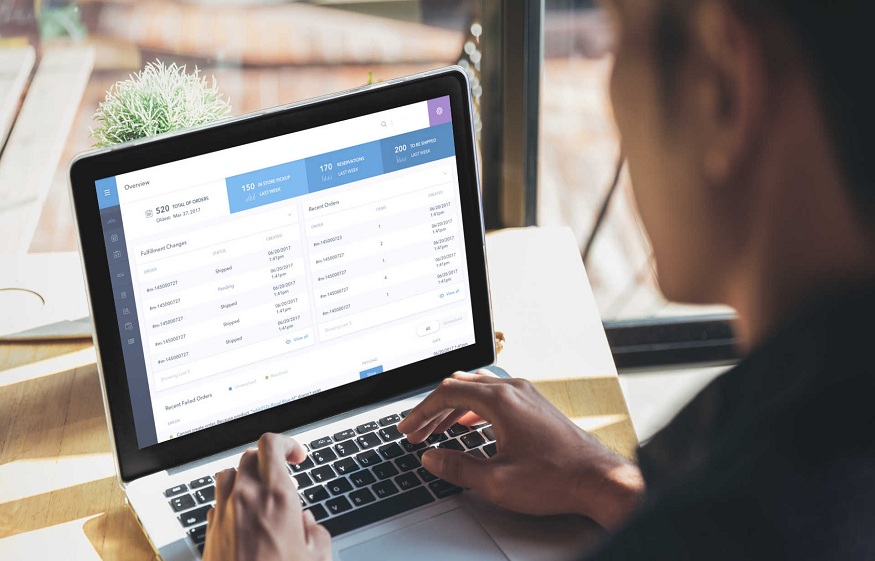The fulfillment of orders in the proper manner is the demand of the e-commerce world. According to a survey by Digital Commerce 360, more than 65 % of customers notice the delivery speed when placing an order. Wholesale businesses use order management software that can be integrated with the systems like B2B ecommerce QuickBooks online to meet customer demand and requirements.
How Does Order Management Software Work?
The order management software systemizes and facilitates the process of order fulfillment. The only way to do that is to have real-time records of inventory throughout the entire supply chain. Customers may have less-than-ideal buying experiences at retailers who frequently need help with out-of-stock situations due to inaccurate information synchronization across all sales channels.
The processes involved in fulfilling an order can vary, but they often go in the order listed below:
Customers place an order from the channel of sales. B2B order management software includes their information in a client profile. Due to this, the companies maintain track of customer orders and their shipping and payment choices.
The OMS updates all inventory levels around all the platforms when the payments get received using real-time data. After this, a receipt is generated and sent to the customer, and the system updates the client’s profile.
The routing of orders is done according to order details by the wholesale order management. It evaluates the stock on hand and the intended location of delivery. The order is then chosen, packed, and double-checked for accuracy in the warehouse.
The OMS communicates with suppliers to request additional inventory to be sent to the warehouse if an item is out of stock. The customer gets a notification if there is a delay in the shipping of an order.
After packing, the order is sent to the buyer using outside shipping software. The customer gets the confirmation mail from the OMS software that also involves the tracking record.
Some Essential Features to Look at While Choosing the OMS
Order Management: A good OMS should provide a comprehensive order management system to ensure the management and tracking of the order from where they are placed. It should include the features such as order processing, tracking, and fulfillment.
Inventory Management: OMS should encompass robust inventory management capabilities that can allow tracking of the level of inventory in real-time and can make an informed decision related to newly ordered products
Customer Management: it should comprise the features of customer management that can ensure the monitoring and tracking of customer information and preferences and provide personalized services to customers.
Integrations: it is one of the essential features because integration with other systems like B2B e-commerce QuickBooks online provides the facilities, such as accounting and financing. This will allow you to streamline your operations and improve efficiency.
Reporting and Analytics: It should include reporting and analytics capabilities, allowing you to track key metrics and build decisions based on data and related operations.
Scalability: Your OMS should be scalable, allowing customers and functionalities to be added when the business grows.
User-Friendliness: A good OMS should be user-friendly and easy to use, allowing you to quickly and easily maintain the orders, inventory, and data of customers.
Considering these essential software features, you can ensure that you choose the correct order management software for your business and take your operations to the next level.
Application Scenarios of Order Management Software
The fulfillment of orders can be challenging, primarily when a large-scale business sells through several channels. Before selecting the OMS software suppliers, companies should consider their organization’s particular needs.
One frequent use case is for companies that have outgrown their monolithic OMS solutions. As these OMS software solutions are linked to older e-commerce systems, they frequently need more robust capabilities sets of standalone OMS software. Moreover, switching to an OMS with the required APIs would be made possible by a microservices-based design, in which various apps are seamlessly interconnected through APIs to build a contemporary, modular tech stack while enabling wholesale best ecommerce for QuickBooks
Another prominent application for an OMS is omnichannel retailers who need fulfillment orchestration around the various sales channels. Order fulfillment logic (OFL), which promotes speed and efficiency and enables the quick delivery of orders to clients, can be used to guide goods to the proper places.
Another illustration is how companies use ERP systems to help with order fulfillment. Enterprise resource planning (ERP) software can assist with handling accounting, purchasing, risk management and compliance, and supply chain management. It does not replace a standalone OMS, and businesses may get around some of the most challenging order management issues using a specialized OMS. This OMS also offers the benefit of integrating with other e-commerce systems thanks to APIs.
Final Thoughts
OMS is one of the essential tools for businesses of all sizes, and it helps them to process, track, monitor, and record customer orders. Moreover, the wholesale eCommerce software comprising the feature of B2B ecommerce management with multilanguage can quickly meet global demands.

